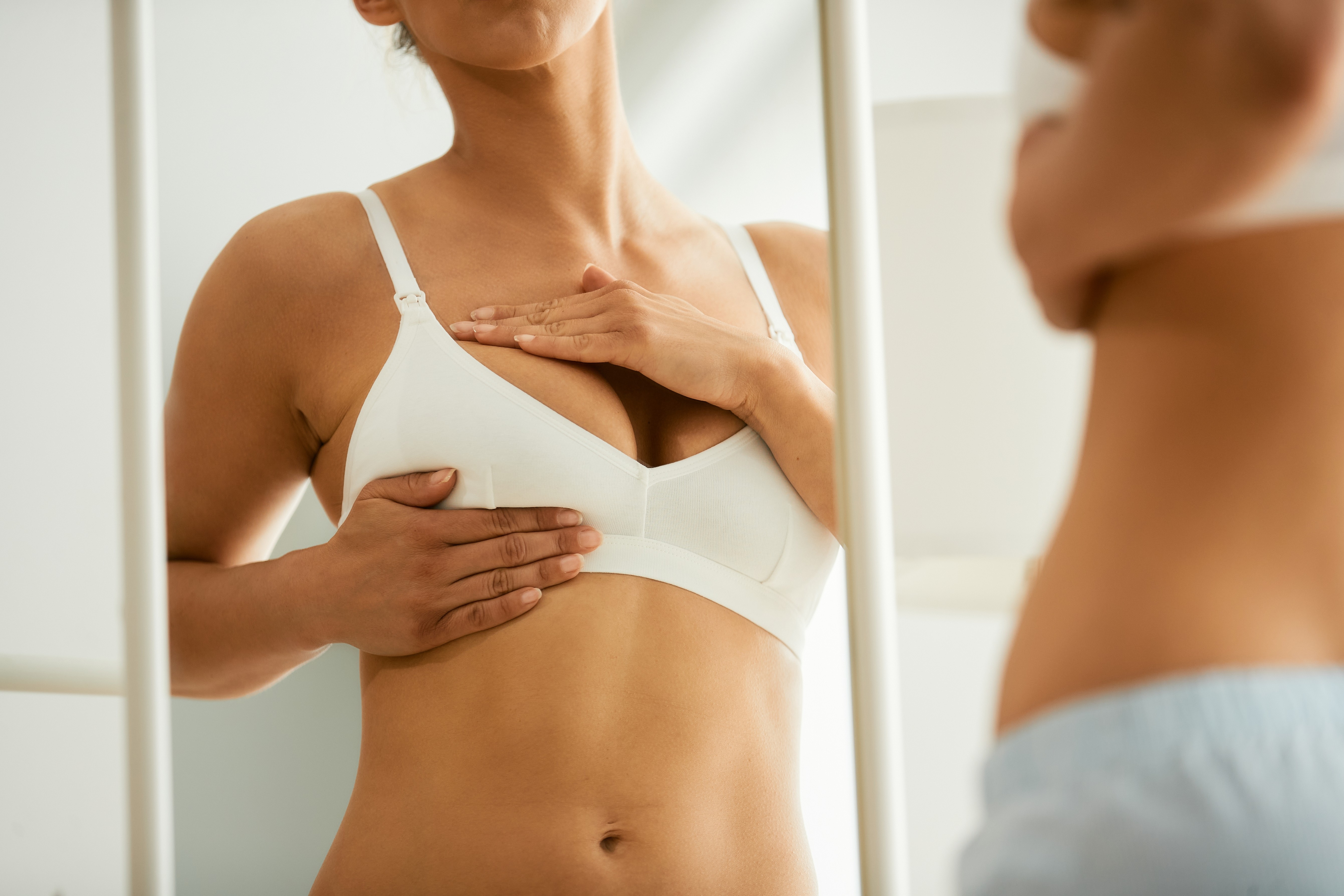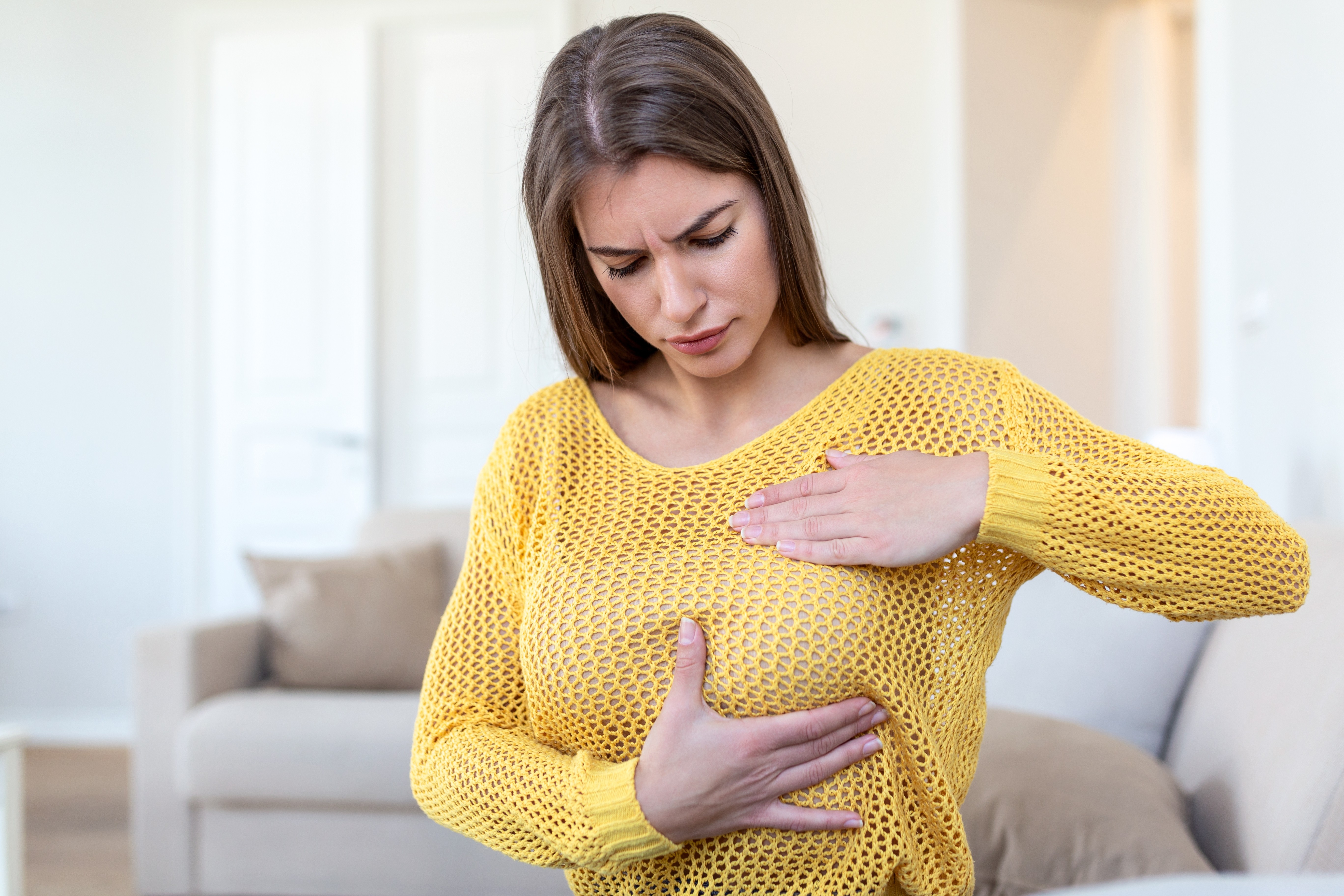‘Boy Meets World’ Star Reveals She Has Breast Cancer. These are the Signs.

Boy Meets World star Danielle Fishel has revealed she’s been diagnosed with early stage breast cancer. Fishel, 43, announced the news on her Pod Meets World podcast on August 19, via PEOPLE. “So I would like to share something with our listeners … I was recently diagnosed with DCIS which is a form of breast cancer,” she said with co-hosts Rider Strong and Will Friedle. “It is very, very, very early. It’s technically stage zero. I was diagnosed with high grade DCIS with micro invasion. And I’m going to be fine, I’m having surgery to remove it. The only reason I caught this cancer when it is still stage zero is because the day I got my text message that my yearly mammogram had come up, I made the appointment.”
Annual mammograms are crucial for early detection, but there are other things to look out for as well. Here are possible signs of breast cancer never to ignore.
RELATED: New $3 Blood Test Can Detect cancer
Lump or Mass

A new lump in the breast or armpit could be a sign of cancer. “The most common symptom of breast cancer is a new lump or mass (although most breast lumps are not cancer),” says the American Cancer Society. “A painless, hard mass that has irregular edges is more likely to be cancer, but breast cancers can be also soft, round, tender, or even painful.”
Change In Appearance/Feeling

Changes in how the breast feels or looks could be a sign of cancer. Here is what the National Breast Cancer Foundation says to be aware of:
Nipple tenderness or a lump or thickening in or near the breast or underarm area
A change in the skin texture or an enlargement of pores in the skin of the breast (some describe this as similar to an orange peel’s texture)
A lump in the breast (It’s important to remember that all lumps should be investigated by a healthcare professional, but not all lumps are cancerous.)
Any unexplained change in the size or shape of the breast
Dimpling anywhere on the breast
Unexplained swelling of the breast (especially if on one side only)
Unexplained shrinkage of the breast (especially if on one side only)
Recent asymmetry (unequal or lack of sameness) of the breasts. Although it is common for women to have one breast that is slightly larger than the other, if the onset of asymmetry is recent, it should be checked.
Nipple that is turned slightly inward or inverted
Skin of the breast, areola, or nipple that becomes scaly, red, or swollen or may have ridges or pitting resembling the skin of an orange
Nipple Discharge

Unexplained nipple discharge should never be ignored. “Nipple discharge that’s bloody or clear may be a sign of breast cancer,” says the Cleveland Clinic. “This is especially true if it’s leaking from just one breast. People with nipple discharge due to cancer often feel a lump on their breast, as well. Still, breast cancer rarely causes most nipple discharge.”
Redness and Swelling

Redness and swelling could be a sign of cancer. “Not all types of breast cancer cause the same symptoms,” says the Breast Cancer Research Foundation. “For example, a lump is usually not present in inflammatory breast cancer. More common symptoms of inflammatory breast cancer include redness and swelling of the breast, which are caused by cancer cells blocking lymph vessels in the skin.”
Paget’s Disease

Itchy skin around the nipple could be a form of cancer. “Paget’s disease, another rare type of breast cancer, can cause a lump but is also associated with less commonly seen symptoms that may be mistaken for a skin condition such as eczema,” says the Breast Cancer Research Foundation. “That’s because Paget’s disease involves the skin of the nipple and the areola (the pigmented area around the nipple), causing redness and itching of the nipple and/or areola as well as flaky, crusty, or thickened skin on or around the nipple. Other signs of Paget’s disease include a flattened nipple and yellow or bloody nipple discharge.”
Breast Pain

Pain in one spot that doesn’t go away should not be ignored. “In most cases, these changes are not cancer,” says the Breast Cancer Research Foundation. “For example, breast pain is more common with benign (not cancer) breast conditions than with breast cancer. However, the only way to know for sure it’s not breast cancer is to get it checked. If a change turns out to be breast cancer, it’s best to find it at an early stage when the chances of survival are highest.”
Family History

Some breast cancers are more likely to happen if they run in the family. “If you have a family history of breast or other cancers, your doctor may advise you to follow screening recommendations for women at high risk of the disease,” says the Breast Cancer Research Foundation. “These can include starting screening before age 40, getting a mammogram and an MRI every year, and undergoing genetic testing. Women with an average breast cancer risk should ask their doctors what screening schedule is right for them.”